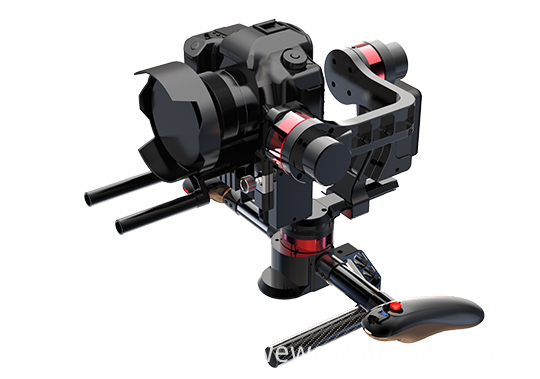LED industry has entered the era of low profit
 After experiencing investment booms and price cuts, the domestic LED industry is entering the era of meager profits. In the past few years of huge investment, industrial regulations have not begun to increase, but also brought about excess capacity, LED companies face fierce competition in the survival of the fittest. Many people in the industry believe that the industry may face a cold wave in the short-term, and shuffling is inevitable.
After experiencing investment booms and price cuts, the domestic LED industry is entering the era of meager profits. In the past few years of huge investment, industrial regulations have not begun to increase, but also brought about excess capacity, LED companies face fierce competition in the survival of the fittest. Many people in the industry believe that the industry may face a cold wave in the short-term, and shuffling is inevitable. The output value will reach 205.9 billion this year
According to a report in the Securities Times, although the tide of price cuts has already come, the investment in the LED industry remains unabated. According to a report recently released by Gaogong LED, it is expected that by the end of 2012, the total output value of the domestic LED industry will reach 205.9 billion yuan.
The report shows that in 2011, the total number of domestic MOCVD equipment was 803 units, and in 2012 it reached 917 units, an increase of 114 units. Despite the acceleration of major equipment investment, the output value of domestic chips has only increased by 20% this year, while the price of sapphire has dropped by 35% year-on-year, and the price of LED chips has fallen by 32% year-on-year.
“From the overall perspective of this year, the status of the upstream sector has actually improved. This is mainly due to the increase in the proportion of investment in downstream applications in the second and third quarters, a large part of which is due to the shift of traditional lighting companies to the LED industry. "Investment." Zhang Xiaofei, CEO of Gaogong LED, said that from the perspective of the entire upstream investment, the growth rate of epitaxial wafer investment dropped from 46% last year to 10% this year, while the investment growth in downstream applications was 21% last year, 2012. It rose to 53%, so the investment focus of the LED industry shifted from the upstream to the downstream.
Zhang Xiaofei also predicts that there will be less than 30 epitaxial chip companies in the next year, and three domestic MOCVD equipment manufacturers will emerge, but there will be no product sales, the packaging plant will close down 20%, and the downstream display company will close down faster, LED down light The penetration rate of spotlights in the domestic market will exceed 30%, and LED lighting industry sales may reach 1 billion yuan.
The chip package prices are greatly reduced
“Over the past few years, the investment in the LED upstream chip area has been huge. The price has dropped to 30% in 2010. The performance index has doubled compared to 2010. The average price in the packaging field has dropped by 40% compared to 2010, and the performance is also The increase, but relatively slowly, the price of terminal application products is also declining. The original 300 yuan products are consistent with the basic performance of the current 200 yuan LED products." Wang Lianghai, vice president of Tongfang shares observed that technological innovation led to substantial price reductions, downstream The terminal profit rate is decreasing year by year.
The huge investment in upstream chips over the past few years has led to oversupply of LED products. "The oversupply of LED products is the reason for the price war, but this reason is multi-faceted. Many companies are expecting the LED market to be too large and have swarmed into the blind transformation of the LED industry." Zheng Tiemin, general manager of Shandong Inspur Huaguang Co., Ltd. It is stated that some entrepreneurs only pay attention to the immediate interests. Some enterprises do not receive policy subsidies and preferential policies, and then go to expand production in other places because they see the urgency of attracting foreign investment from foreign governments.
Zheng Tiemin believes that the price war will go through limited production, production suspension, special production and closure, mergers and acquisitions, and integration into a complicated process. The remaining companies will gradually move toward normal development. With the further enhancement of product performance, the quality will be further stabilized. The price of the product will tend to be reasonable.
Pros and cons of government subsidies
In the past few years, under the promotion of energy-saving and emission-reduction policies, various local governments have vigorously supported the development of the LED industry and issued many preferential policies for the industry. Zheng Tiemin believes that many local governments have made blind decisions and made many unrealistic grand plans. Throw out tempting preferential policies, including giving away land and factories, attracting many companies to invest, which is also an important cause of excess capacity in the industry. the reason.
In this regard, Qin Shuguang, deputy general manager of Optoelectronics has different views. He believes that the national government subsidy policy is a very effective means to promote the development of emerging industries. This model is not Chinese characteristics. Many foreign companies have received government subsidies until now.
Zhu Bingzhong believed that the government introduced a subsidy policy to provide R&D grants and R&D input subsidies to enterprises not only to promote the progress of new technologies, but also to stimulate the market to form mass production, promote the decline of raw material prices, and provide better support for the development of the LED industry. . The starting point of the government's subsidy policy for LED companies is to allow a small number of companies to drive the entire industry, spur a new growth point for energy conservation and emission reduction, and promote the LED industry to develop in a better direction. The subsidy policy itself has no problems. The key is to look at each How do companies manage to use government subsidies?
Three-axis Stabilizer is composed of pan axis, rolling axis and tilt-axis. With a gyro-stabilized gimbal system, it keeps stabilized or steerable horizon with automatic calibration to give you an unprecedented smooth shooting experience.
3 axis gimbal stabilizer can be divided into 4 parts, including Three-axis Smartphone Stabilizer, three axis micro dslr stabilizer, 3 axis camera stabilizer and 3axis motion camera stabilizer.

For different consumer, there are 2 kind of 3 axis gimbal stabilizer for them, which are consumer stabilizer and Professional Stabilizer.

Wewow focusing on handheld stabilizer is a technology company which does R & D independently. With Wenpod series product released, the company achieved the industry's praise and quickly became the leader of the smart stabilizer industry.
Our service
1. Reply to you within 24 hours.
2. Already sample: within 1-2days.
3. Shipping date: within 24 hours once get the payment.
4. 12 months warranty.
5. After-sales service, solve within 3 working dates.
If you have any questions, please contact with us directly.
Wewow appreciates domestic and international business relationship!
Three-Axis Stabilizer,Popular Three-Axis Mobile Phone Stabilizer,Professional Three-Axis Stabilizer,Handheld Three-Axis Gimbal Stabilizer
GUANGZHOU WEWOW ELECTRONIC CO., LTD. , https://www.stabilizers.pl